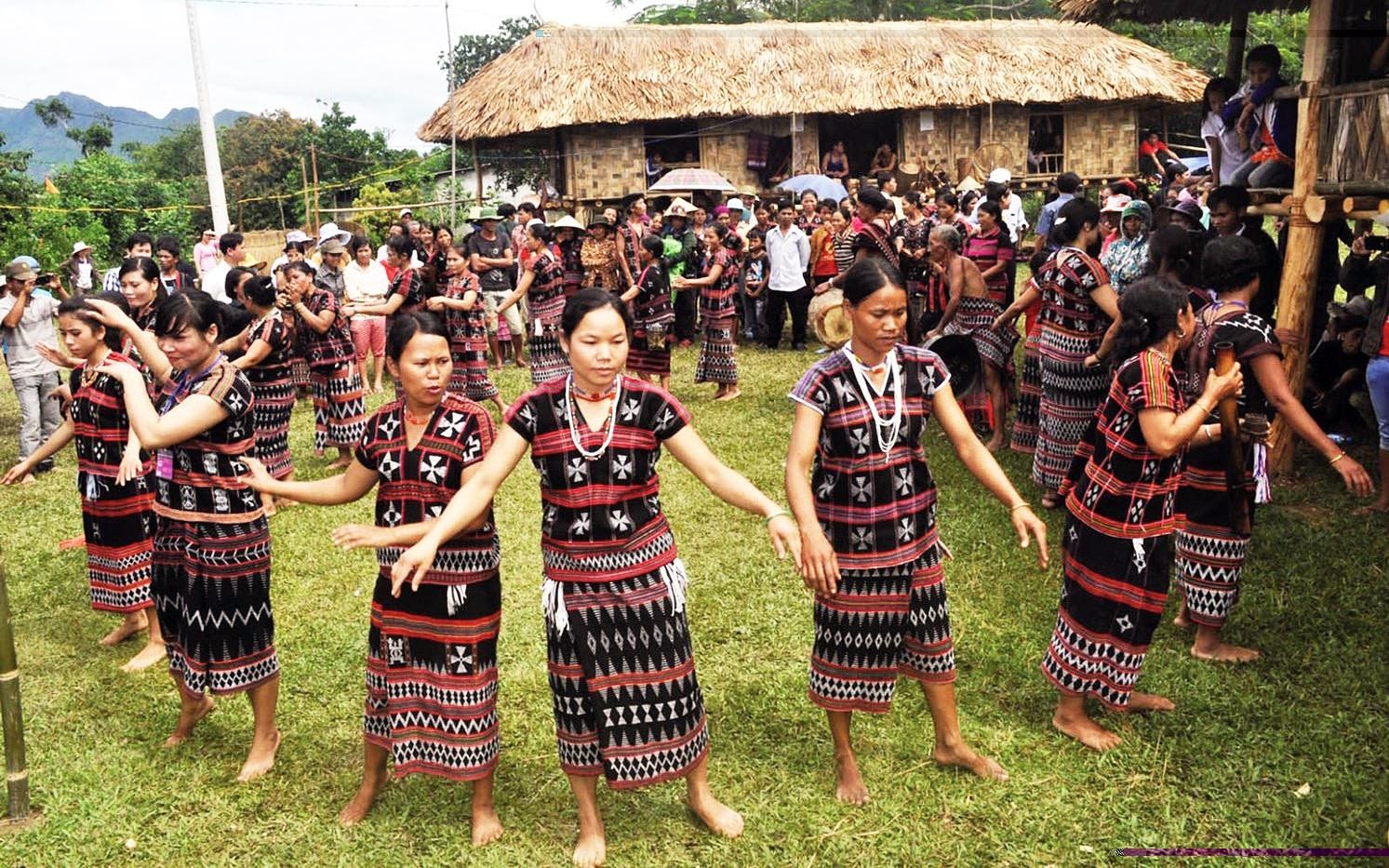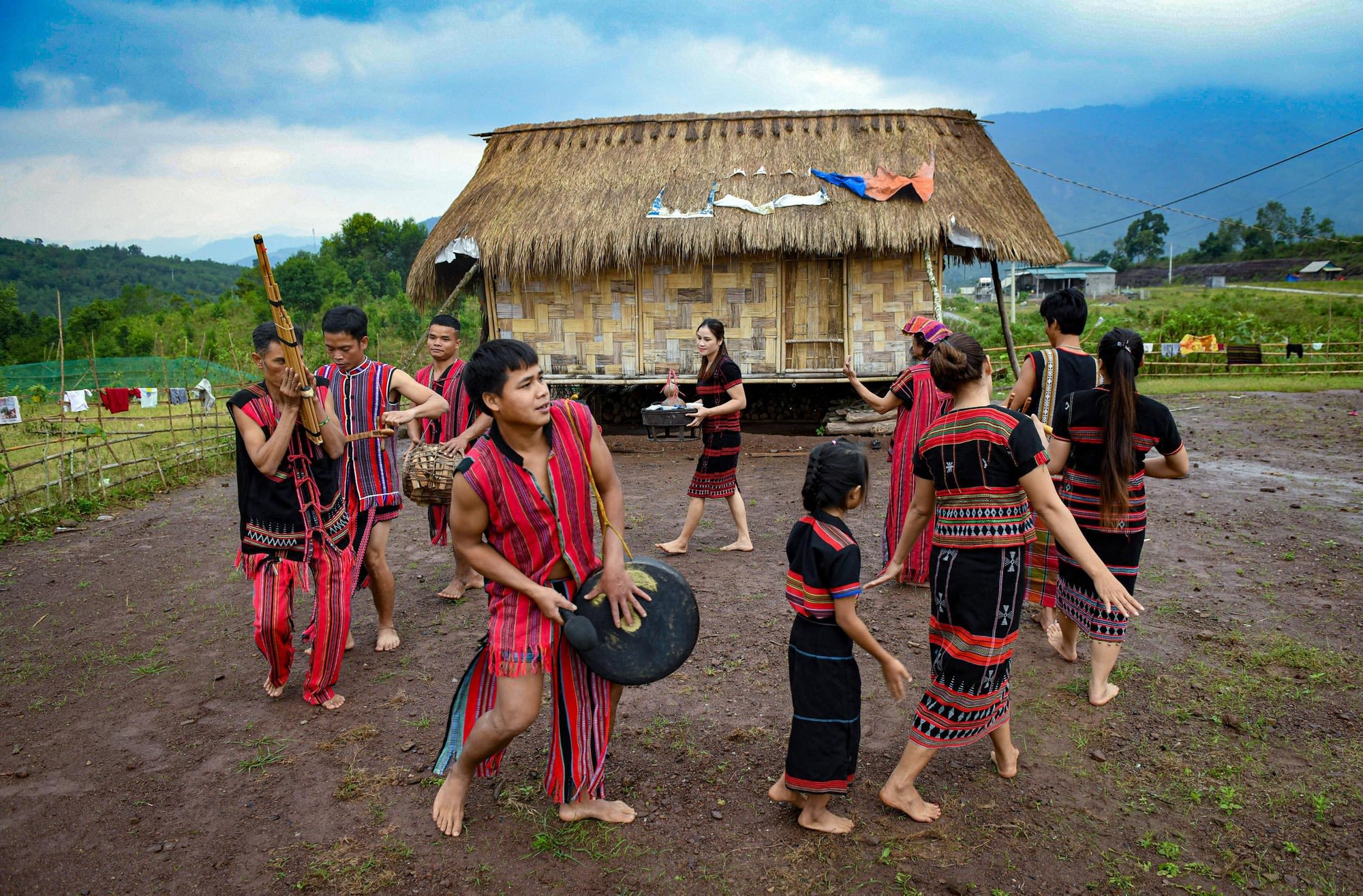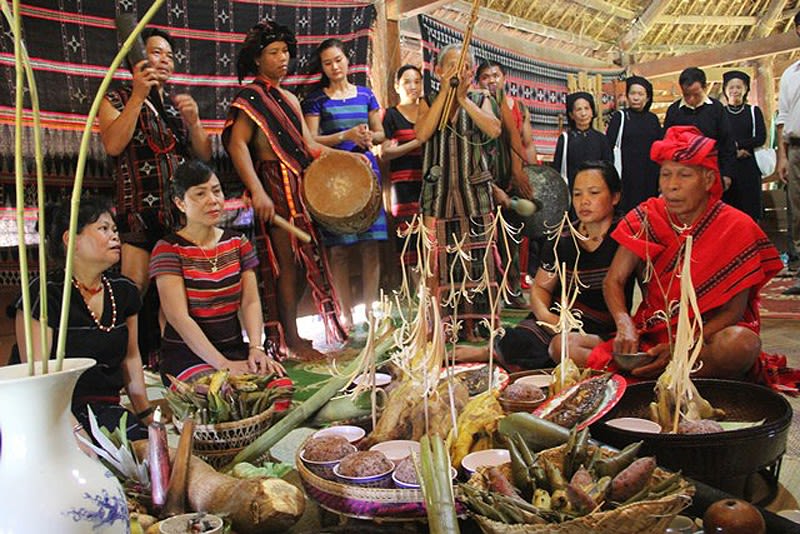
Ta Oi people belong to a long-standing population group in Truong Son. With a population of more than 50,000 people, the Ta Oi people still retain their unique traditional culture and long-standing customs.
■ Other names: Pa Co, Ta Uot, KanTua, Pa Hy. Local groups: Ta Oi, Pa Co, Pa Hy.
■ Language: The language belongs to the Mon-Khmer group in the Austroasiatic language family. Several decades ago, writings were born on the basis of using Latin letters to create a set of rhymes, taking Pa Co as the standard.
■ Residence: Ta Oi ethnic people reside mainly in the districts of Dakrong and Huong Hoa in Quang Tri Province and A Luoi District in Thua Thien Hue Province.
■ History: Most researchers believe that the Ta Oi people originated in Laos and migrated to Vietnam over several hundred years, while some elderly Ta Oi people believe that the Ta Oi originated locally.
1. Historical Origin
Regarding the ethnic origin, most researchers believe that the Ta Oi people originated in Laos and migrated to Vietnam for several hundred years, while some elderly Ta Oi people believe that the Ta Oi originated locally.
Other names: Ta Oi, Pa Co, Ta Uot, KanTua, Pa Hy, etc.
Local groups: Ta Oi, Pa Co, Pa Hy.
2. Population
According to the census data on 53 ethnic minorities as of 1 April 2019, the total population of Ta Oi ethnic group is 52,356, of which 26,201 are male and 26,155 are female. The proportion of population living in rural areas accounts for 92.5%.
3. Geographic distribution
Ta Oi ethnic people reside mainly in the districts of Dakrong and Huong Hoa in Quang Tri Province and A Luoi District in Thua Thien Hue Province.
4. Language
The language belongs to the Mon-Khmer group in the Austroasiatic language family. Several decades ago, writings were born on the basis of using Latin letters to create a set of rhymes, taking Pa Co as the standard.

Community-based cultural activities of Ta Oi people (Photo: Ethnic and Development Newspaper)
Community-based cultural activities of Ta Oi people (Photo: Ethnic and Development Newspaper)
Education: According to results of 2019 census on ethnic minority groups, as of April 1, 2019, the percentage of Ta Oi people aged 15 years and over who can read and write in general is 78.4%; the net attendance rate for primary school is 99.8%; the net attendance rate of secondary school is 83.1%; the net attendance rate of high school is 52.8%; and the proportion of out-of-school children is 17.8%. The percentage of Ta Oi people aged 15 years and over who can read and write in their traditional language is 6.3%.

A Ta Oi woman weaves traditional brocade cloth according to the age-old manual method (Photo: Vietnam National Village for Ethnic Culture and Tourism)
A Ta Oi woman weaves traditional brocade cloth according to the age-old manual method (Photo: Vietnam National Village for Ethnic Culture and Tourism)

A traditional cultural activity of the Ta Oi people. (Photo: THANH DAT)
A traditional cultural activity of the Ta Oi people. (Photo: THANH DAT)
5. Main features
Clothing: Women wear skirts and shirts, or long skirts that cover the chest down, and sometimes using a woven belt. Men wear loincloths and shirts or often go unclothed. The custom of tattooing on the skin and wearing jewellery to widen the earlobes is applied among only a few old people.
Housing: Traditional house of Ta Oi people is a long house on stilts, for many couples and their children. The roof is curved at two gables and there is there is a “khau cut” (a decorative symbol on the roof of the house on stilt). In the house, each private family has its own living room.
Social relations: The Ta Oi people live according to traditional customs, respecting the elderly, believing in the village patriarch, and loving children regardless of boys or girls. Each village consists of people of different clans. Each family clan has its own leader, own custom and own name. The village is the basic and self-governing social organisation in a traditional society.
Marriage: After boys and girls grow up and have six upper front teeth amputated, they can get to know each other and get married. The marriage is initiated by the groom's family. The bride's family receives wedding wealth including gongs, jars, copper pots, buffaloes, pigs, etc. Some rich people had more than just one wife.
Funeral: The village's communal mortuary is only for ordinary dead people. There is a custom of "dividing property" for the dead as in ethnic groups. The burial after death is temporary. A few years after the burial, the funeral family held a re-burial ceremony, placing the remains in a new coffin and burying it in the graveyard, next to the deceased relatives from before. The tombs were beautifully decorated with carvings and drawings.

The worshiping ritual inside the house of Ta Oi people during the festival praying for a favourable harvest. (Photo: Vietnam National Village for Ethnic Culture and Tourism)
The worshiping ritual inside the house of Ta Oi people during the festival praying for a favourable harvest. (Photo: Vietnam National Village for Ethnic Culture and Tourism)
Worship: The Ta Oi people believe that everything has a supernatural spirit, from heaven, earth, mountains, forests, springs, trees to rice, people, and animals, etc. Many villages also worship the same "sacred" object, such as a stone, copper ring, gong, or jar, which are deformed or have different origins. They are considered to have a mystical relationship to the life of the village.
Festival: There are many worshiping rituals, related to health, property, disease prevention, and farming. The big festivals have buffalos fighting. Associated with the farming cycle, there are important rituals to pray to the god of rice, hoping for a bountiful harvest. The traditional Tet (Lunar New Year) Festival takes place between threshing and the new upland season.
Arts: The capital of proverbs, folk songs, riddles, and ancient stories is quite rich. Folk songs include the Caloi songs while drinking alcohol and during the festivals, Ba boih singing when working or traveling, and Roih tunes to advise children and grandchildren on happy occasions and Cha chap singing for the love of male and female young people.
Instruments include many types: gongs, buffalo or goat horns, 14-pipe trumpets, 6-hole flutes, and Ta lu.
6. Economic conditions
Farming and growing rice is the main source of livelihood of the Ta Oi people. The farming method is similar to the Co Tu and Bru - Van Kieu ethnic groups. Water fields have been developed in many localities. Besides traditional crops, in recent years, Ta Oi people have grown a number of new crops such as coffee, lo o (Bambusa balcooa), rattan and acacia. They have also switched to raising livestock and poultry and digging ponds to release commercial fish. The Ta Oi people have been associated with the traditional brocade weaving for a long time. Their products are popular with neighbouring ethnic groups. Their trading relationship with Laos is also quite important.
According to census data on 53 ethnic minorities as of 1 April 2019, the rate of poor households is 35.4%, and the proportion of near-poverty households is 14.9%. The unemployment rate among Ta Oi group stands at 1.63%; the percentage of trained workers with diplomas and certificates is 13.5%; the proportion of labourers working in the non-agricultural sector is 34.3%; the proportion of labourers working in management or technical qualification at high and middle level is 5.3%; and the proportion of households with traditional crafts is 5.97%.